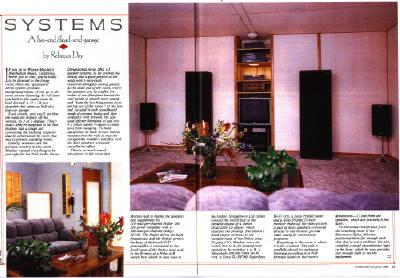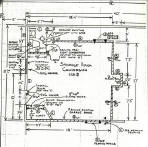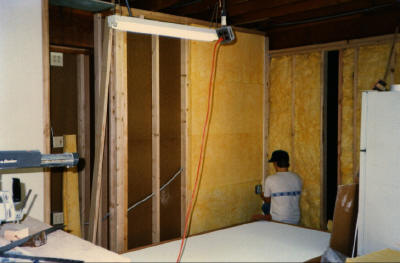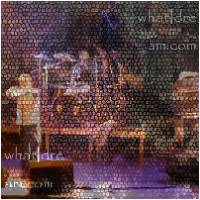A no-compromise room dedicated to music...
In 1988 I undertook a big construction project,
converting half of my 4 car garage into a music room. My music room
was published in Stereo Review magazine in June, 1989. To read the
article full size, just click on the scan below.

Since then, the room has been adapted as both my
studio for
practicing music and as my office. The
equipment has evolved as well. The basic speaker complement is now a
biamped pair of
Polk
SDA-SRS's, a custom pair of
VMPS Larger Sub-woofers
and a pair of NHT 1.3a's on stands to round out the Polk's weak midrange.
How it's built....
A lot of planning and research went into the design
of the room. This is the room that music built. My approach to
designing the room was to do my own research through the audio
press, the manufacturers of my speakers and audio insulation
manufacturers (no internet back then). The following is a scan of the basic structure plan.

The idea of a live-end, dead-end music room is to
absorb all but the direct sound from the speakers in front of the
listener and let the sound behind the listener bounce like wild to
give a feeling of increased depth. This works because the brain
interprets position based on sounds coming from in front of the
ears. Sounds which come from behind the ears are not accurately
positioned, so the more irregular they are, the better the depth
effect.
To absorb the sound in front of the listening
position, I used exposed beams in the new walls and ceiling to create
a 3.5" sealed air gap. On top of the air gap, I applied 2.5" of
Manville 1000 Spinglass high density fiberglass insulation. Over the
Spinglass, I used 1" thick Armstrong 3104 high density fiberglass
ceiling panels. With these facing panels there is a lot of variation
possible for price, durability and appearance without affecting the
sound.
The combined effect of these materials is
a 3.5" layer of high density fiberglass over a sealed 3.5" air gap.
This gives good sound absorption well below 100Hz, thus blocking
reflections which would give incorrect position information to the
listener. Lower frequencies tend to be less directional, so deeper
fiberglass layers and air gaps have diminishing benefits.

Ideally the room should have a depth 1.5
times the width. I couldn't quite do that. Tilting the walls
slightly helps prevent standing acoustic waves from doubling on
themselves. The recessed equipment cabinet keeps the equipment behind
the stereo image.


This site includes hours
of streaming music at mid quality and about 90 minutes of concert
streaming video. If you would like to
hear all of the music or see all the video from this site in one
place, press the
button above to
launch the virtual music room in a separate window.
As an alternative, many pages have their own content-specific music
and video which you can play as you navigate. Note: If you run anti "pop-up"
software that prevents opening a separate window,
click here to navigate
directly to the virtual music room. The music will require a
connection of at least 48.8K baud and the video will require at
least 100K baud. You'll need Windows Media Player
- the latest version of which seems to be more forgiving of slow connections.
You can download it for free
from Microsoft at:
http://www.microsoft.com/windows/windowsmedia/download/default.asp.



Mackey Group, Inc. © 2002 - 2010

